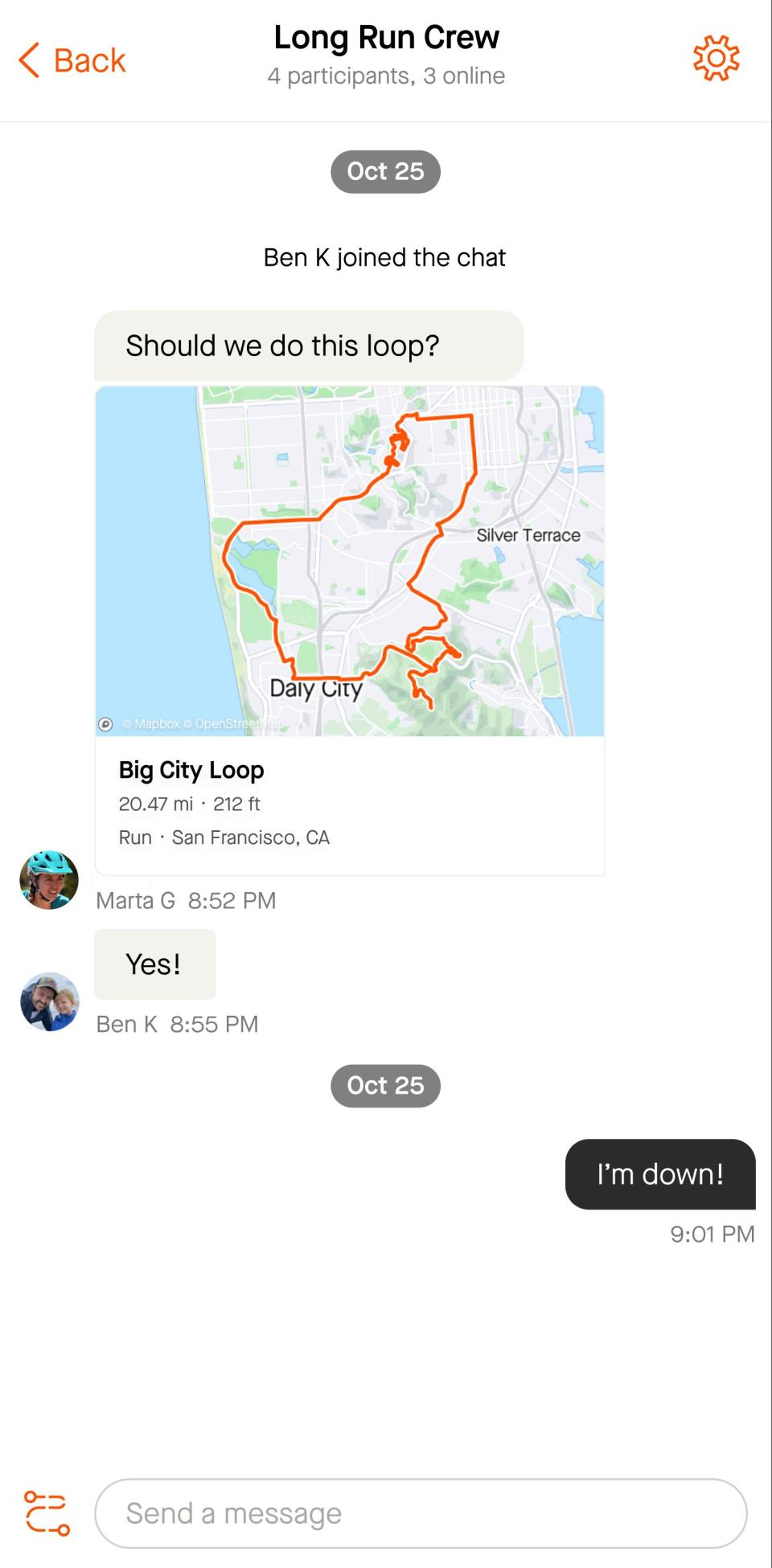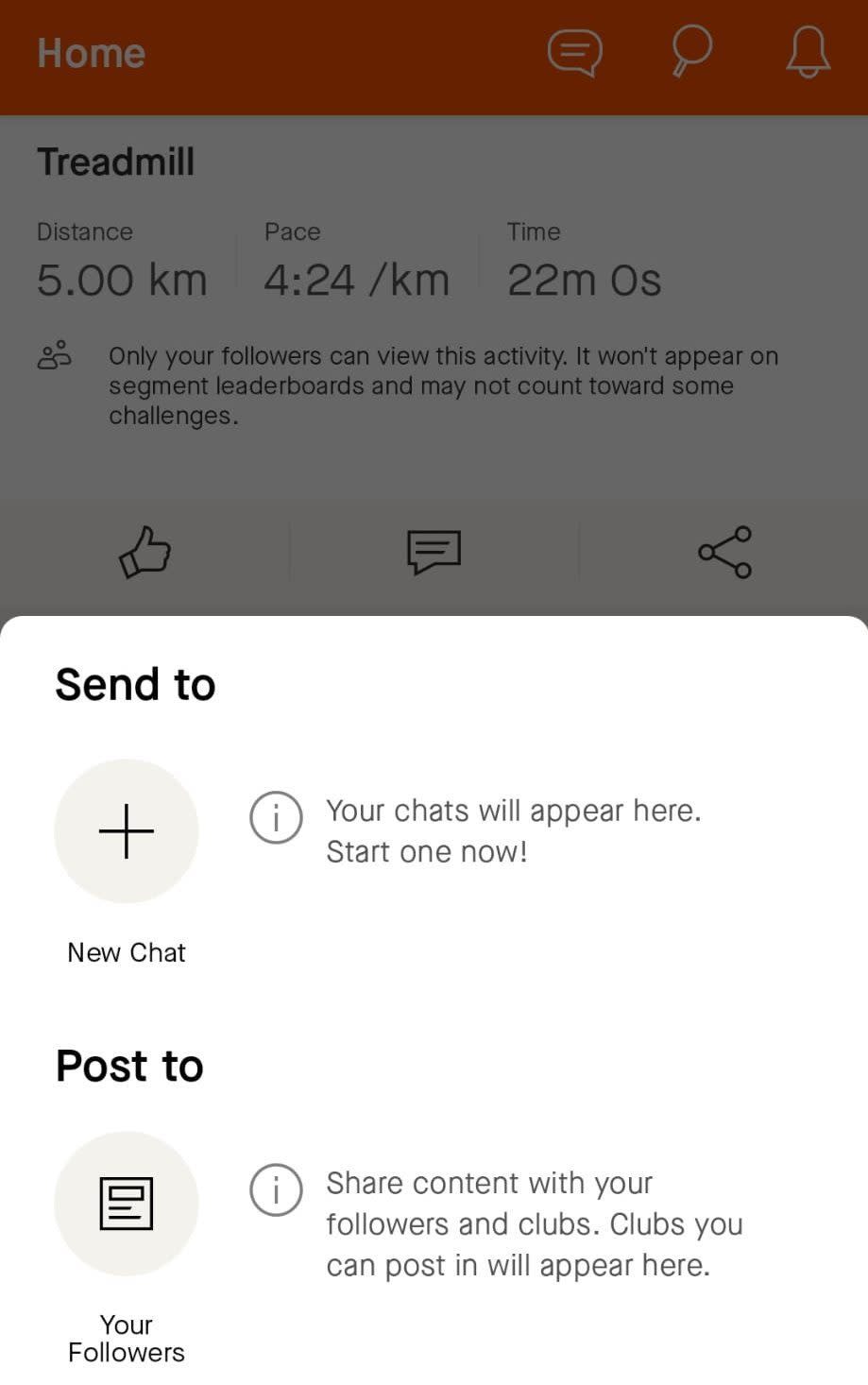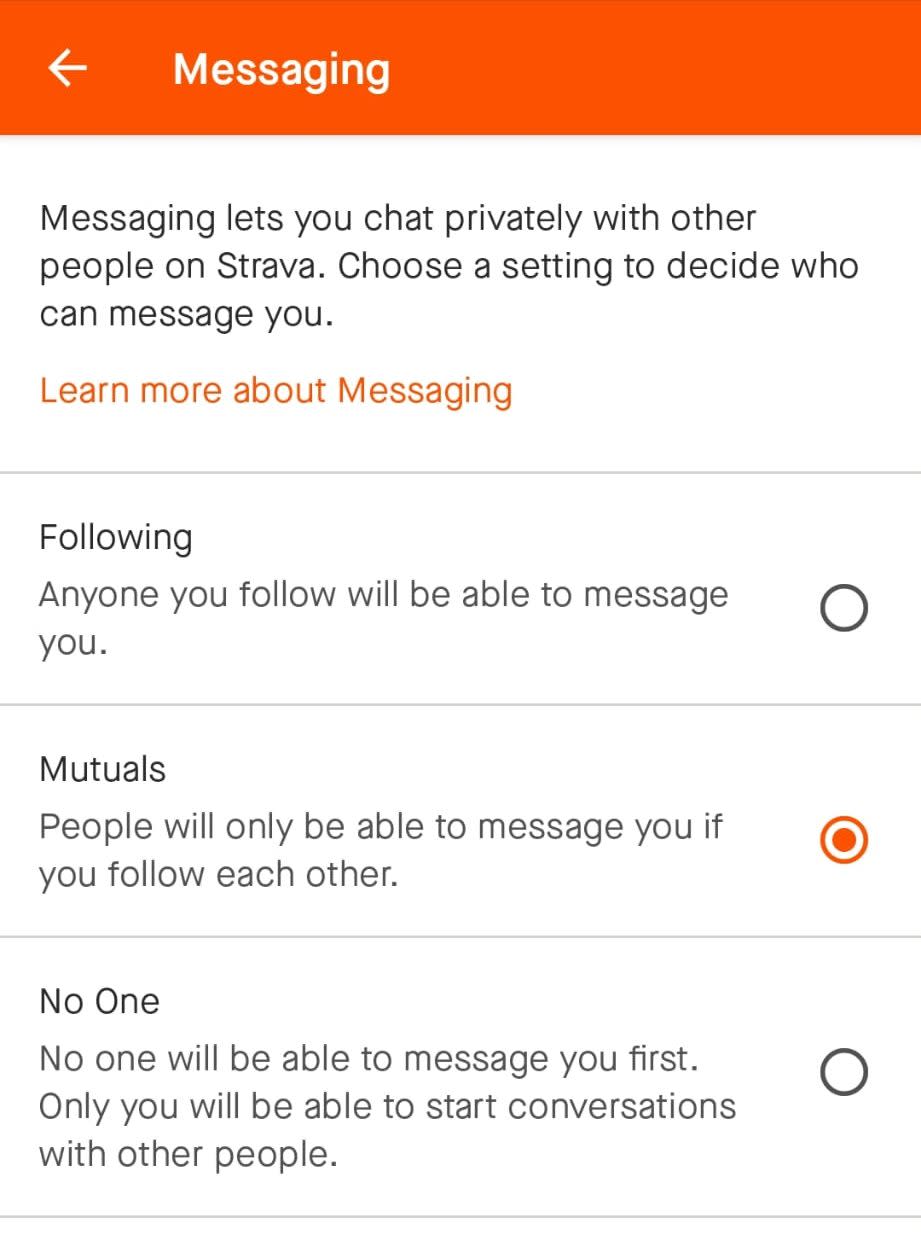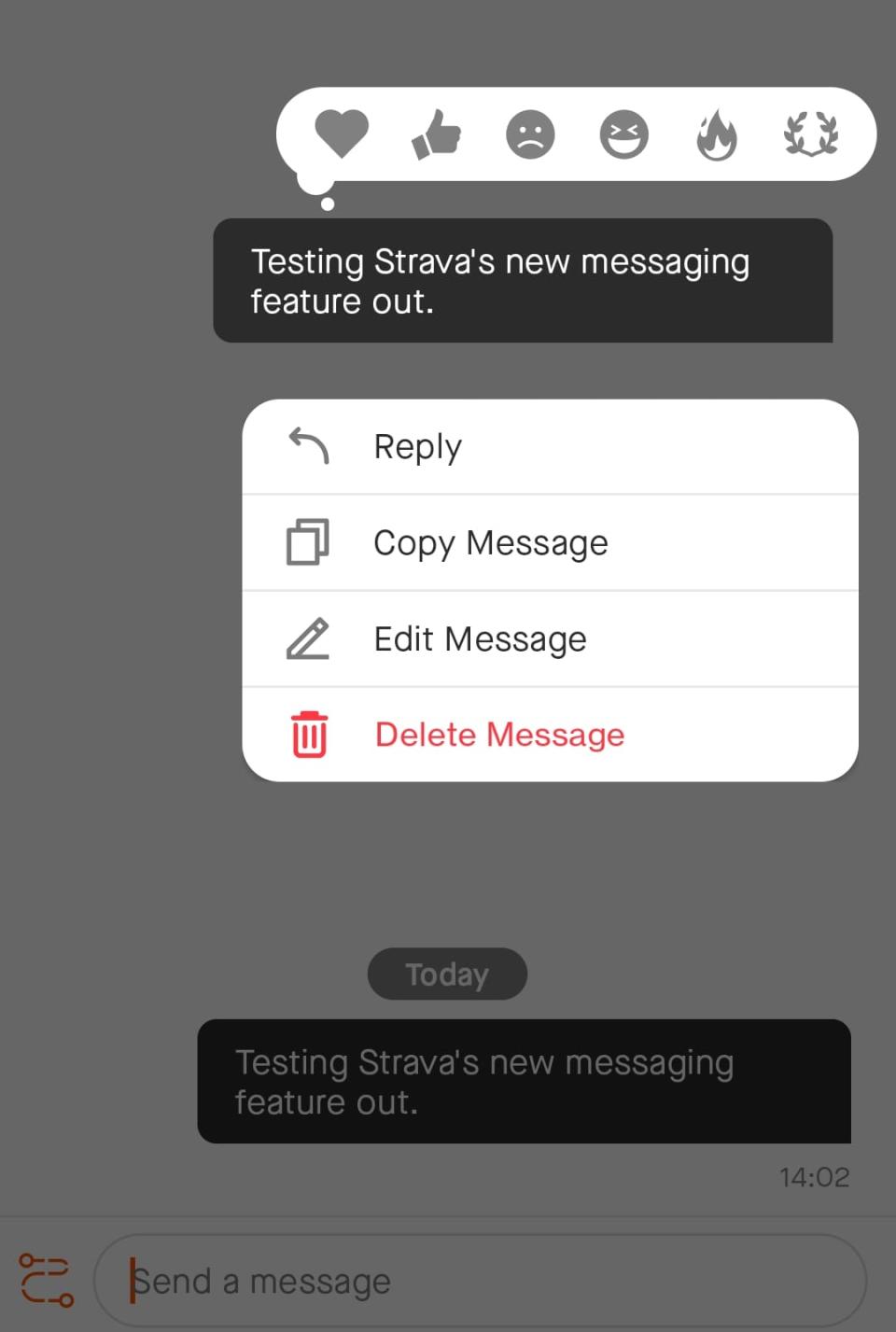Strava gets in-app messaging to help you bypass WhatsApp
Strava is taking one big step closer to becoming a true social network, as the fitness-tracking platform introduces in-app messaging to let users send private one-to-one and group messages.
The new messaging feature, which is available to both free and premium subscribers, goes some way toward unifying everything in a single app, so budding athletes can coordinate activities without having to context-switch between Strava and third-party messaging apps like WhatsApp.
Through the little speech bubble icon at the top-right of the app, users can initiate a chat with anyone in their network, or start a new group which can be customized with its own name.

Social club
For millions, Strava has become the de facto activity tracking platform for recording and analyzing rides, runs, rows and dozens more activities. But over its 14-year history, the platform has morphed into something more akin to a social network, allowing users to find and share routes, interact with groups, post photos, comment on friends' activities and give kudos.
In many respects, Strava could be described as a "Facebook for fitness." But the actual "social" features have always been limited -- typically, the extent of a social interaction on Strava would be commenting on a friend's activity, or giving them a "thumb's up" (kudos). Things get a little more functional in Strava events and clubs, which are basically private groups with permitted members who can chat on discussion boards and receive notifications for new messages.
But before now, friends using Strava would typically have to take their discussions "off platform" to organize logistics for a weekend bike ride, or to share information that they don't want to be in the public domain. With messaging built-in, Strava hopes to change that.
"Our community will now be able to coordinate adventures, connect for inspiration and tips and share their journey -- all on one platform," Strava's chief business officer Zipporah Allen told TechCrunch.
Strava has a button that links directly to the user's saved routes, while it also serves a content preview of the route directly in the message, building on functionality the company rolled out last month. And individual activities will also now have a sharing option, so users can share that 5 km run to a private or group chat directly from the share button attached to that activity.

Users can set their own preferences in terms as to who can message them or invite them to a group chat -- this defaults to whatever their profile visibility is. For example, if their profile page is limited to "followers," then Strava will limit the messaging feature to "mutuals," which means only users who follow each other can message each other.
However, this can be adjusted in the settings, making it possible for a user to keep the profile visibility setting as it is, but allow "following," "mutuals" or "no one" to message them.

Sticky
In-app messaging was one of Strava's most requested features and has been marked as "under consideration" for some time -- some have even taken to starting a petition to get Strava to build the feature.
It's perhaps surprising that Strava has taken this long to bring messaging to the fray, but its decision to do so now is indicative of where it's at as a business. Strava has raised north of $150 million in venture capital funding since its inception 14 years ago, and those backers will need to see some return on their investment at some point -- so the clock is ticking for Strava to identify some sort of exit route, be that an IPO or an acquisition.
Put simply, Strava needs to get its ship in order and make itself as appealing as possible, whether that's for the public markets or a corporate suitor. And that will involve making itself as "sticky" as possible for users.
"When developing features, the guiding principle is how it connects back to our mission -- to motivate people to live their best active life," Allen said. "On Strava, it’s really important to get the authenticity in the connection right so we took our time with beta testing of this feature to get it right for this first iteration."
Strava introduced a confusing and convoluted pricing upgrade earlier this year, one that didn't seem to adhere to any sort of uniform strategy -- it depended on things like when you joined, which region you live in and whether you pay monthly or annually. But by way of example, a typical U.S. customer saw their annual subscription jump from $60 to $80 a year, with the monthly fee rising from $8 to $12 -- a fairly chunky 50% hike.
That kind of increase, without gaining any meaningful new features, will be tough for many users to swallow, users who might previously have ignored their $8/month sub to support a service that they like, even if they're not really getting much from the premium features. And so that is what Strava has been trying to address -- for example, it acquired 3D mapping platform Fatmap in January, which powers a new feature that displays historical activities via 3D video flyovers.
The messaging feature fits that narrative, except it's not limited to premium subscribers. It's designed to make the platform stickier, encouraging networks and groups to form within Strava itself and negate the need to share phone numbers and take their communications to WhatsApp. This "network effect," which has benefited many other social networking platforms before it, could help Strava increase time spent in the app and, ultimately, reduce churn.
It also fits a broader narrative we've seen elsewhere in the social realm, with Facebook's parent Meta noting the trend away from large public platforms and news feeds toward smaller, private spaces -- this is why Meta bought WhatsApp all those years ago, an investment that has yet to really pay off, but which looks increasingly prudent amidst Facebook's slow decay.

Improvements
It's worth noting that Strava messaging is not as feature-rich as it could be though -- while it supports message "reactions," it currently doesn't enable photo-sharing. This is something the company says will be coming in early 2024, alongside other features such as the ability to share clubs and events directly in messaging, replete with content previews. The company also plans to bring messaging directly to Strava Clubs in the future, allowing users to initiate private conversations around specific themes related to that club.
Other notable limitations include the number of people permitted in a conversation -- Strava's group messaging feature has an upper limit of 25 people which, while likely sufficient for most scenarios, will preclude larger running and riding groups from networking. This compares to an upper limit of more than 1,000 group members in WhatsApp, which also started supporting theme-specific communities as of last year.
Elsewhere, Strava messaging doesn't include useful features such as read receipts, so it's impossible to know who has and hasn't read a message in a group chat. And for those who care about end-to-end encryption (E2EE) as found in standalone messaging apps like WhatsApp, Strava if again found wanting.
"As we expand the capabilities of Strava, our focus is on creating a seamless and engaging athlete experience," Allen said. "While our current messaging feature does not include end-to-end encryption, we have implemented robust security measures to protect user data."
Strava's new messaging feature will be rolling out via an update starting today.

